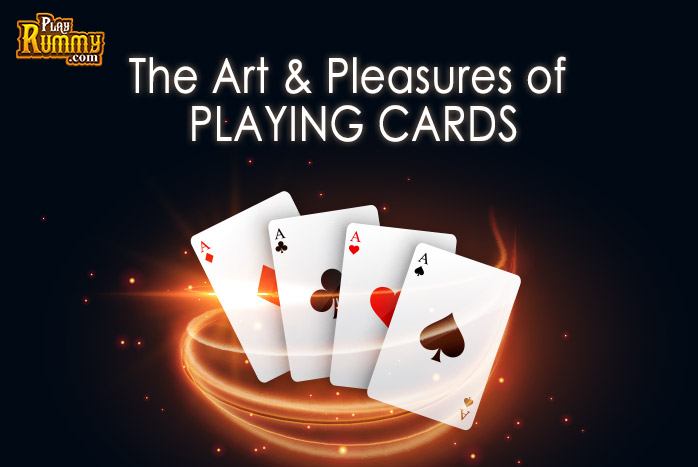
A popular poet, John Keats once wrote this line in one of his poems: A thing of beauty is a joy forever. The line fits well any and every thing that is beautiful around us. Playing cards are no exception to this. line. If you observe them closely, they are a work of art which most of us don’t notice and the pleasure they provide playing with them is unmatched.
Let’s first focus on the arty aspect of playing cards because sometimes the best examples of art are so common that we see them all the time without a second thought. However, if we observe closely they tell an engaging story.
Playing cards have been around in some form or another dating all the way back to ninth century China. By the 14th Century, they were making their way around Europe.
There were two primary design patterns popular in Europe at this time: Parisian (popular in France) and Rouennais (popular in England), the latter of these having a great deal of influence on the card designs that most of us know today.
The four card suits in rummy that we are familiar with, hearts (♥), diamonds (♦), clubs (♣) and spades (♠), were created by the French. The original concept of suits came from the Italian-Spanish deck, which contained cups, coins, clubs and swords. The simple French suits were much easier and cheaper to manufacture because simple stamps could be used for the numbered cards instead of the traditional woodcut method. Only the court cards in the French deck required woodcut illustrations.
Symmetry In Design
The first thing that you can easily notice in the designing aspect of playing cards is symmetry. This design principle serves two purposes. First, it makes the cards look attractive. Our brains love symmetry and are attracted to it both in nature and in art. More importantly perhaps, the symmetry in a deck of cards serves a functional purpose: one can’t hold a card upside down. It seems a small thing, but functionally the game goes infinitely smoother if cards can be immediately picked up and placed into a player’s hand regardless of orientation.
The Usability Factor
Playing card designers went well beyond symmetry in consideration of how to maximise the functionality of the designs. There are quite a few design characteristics worth mentioning. Notice how the numbered cards display their suits, not with a single illustration but by repeating the icon to match the card’s value. Originally, this allowed the exclusion of typography, these days it serves more as a bonus visual indicator.
While the art related aspects of playing cards gives us visual pleasure, there are certain mental and physical pleasures as well that it also provides us.
Help with Concentration, Patience and Discipline
Card games often involve players concentrating for hours at a time without even realising it. Since players require self-control in order to succeed this increases their concentration levels, builds patience and disciplines their approach.
Boosts Memory
Cards are a great way to enhance short-term memory skills. Many games involve an element of memorising, and this can be especially helpful for older people to help keep their minds sharp. Regularly memorising details in a card game could even help to improve memory in real-world situations.
Improves Motor Skills
With age our fine motor skills often diminish. Card games require the participants to use skills like grasping, holding, and even laying cards down in an organized manner. These skills can be a challenge for elderly players, but doing an activity they enjoy while rebuilding these skills can be helpful to improve them.
Improves Math Skills and Logical Thinking
Playing Card games involve quick thinking and mental arithmetic.
Logical thinking also plays a big part in these games. In most such games, one cannot rely solely on guesswork and instead have to think carefully about which cards the other players are holding. Challenging our minds in this manner helps improve emotional and mental well being.
Teaches to cope with loss
Losing can be hard, but it’s a lesson we have to learn, mostly the hard way – and it’s one that playing card games can help us with. People who play cards lose all the time, no matter how good they are.
Losing in cards requires composure, especially when a player has to walk away after putting in a lot of work. They learn how to move on and not to repeat the same mistakes. It also teaches them to become better at turning short-term losses into long-term wins.
Helps Unwind
For many players, there is no better way to unwind at the end of a long and tough day by shuffling a deck of cards and playing a few rounds of their favorite game. It is a great way to relax, regain control over the events of the day, and refocus.










